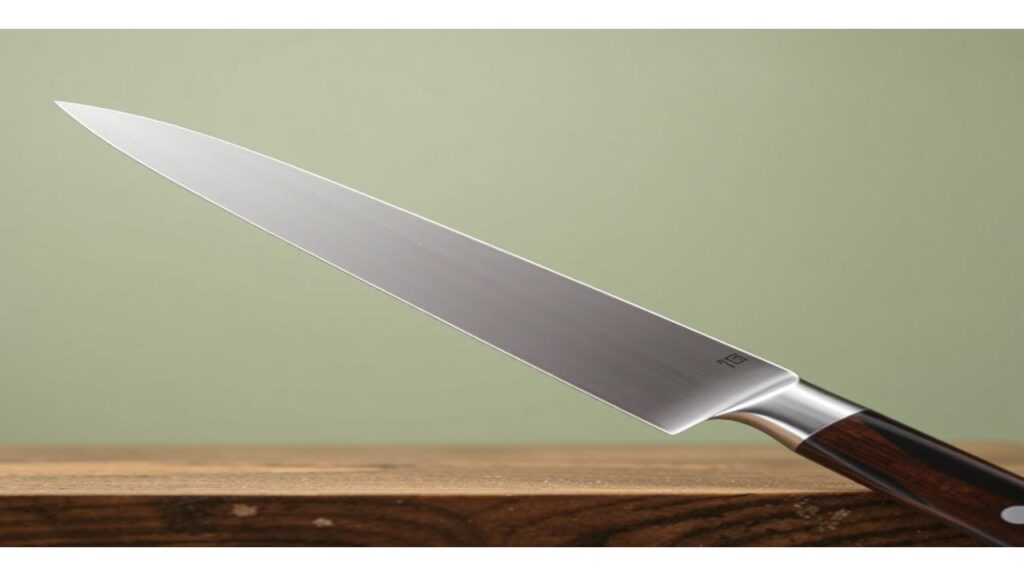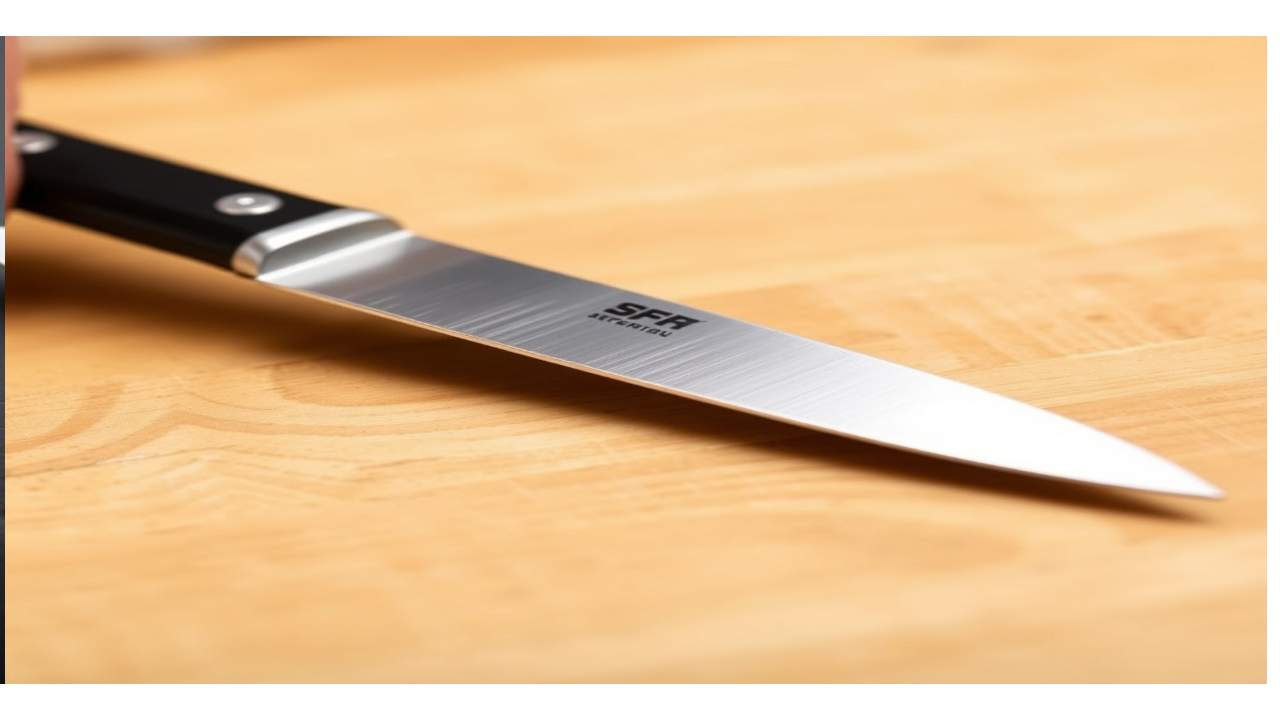When it comes to kitchen knives, one of the most crucial yet often overlooked factors is the angle of the blade’s edge. A common misconception is that a sharper knife, meaning one with a lower edge angle, is always better. However, the ideal angle for a kitchen knife depends on its intended use. For example, Japanese knives often feature an angle between 15 to 20 degrees, offering exceptional sharpness perfect for precise slicing. In contrast, Western-style knives typically have a slightly broader angle, around 20 to 25 degrees, to provide durability and versatility for a range of tasks. Understanding and maintaining the perfect angle for your kitchen knife not only ensures optimal performance but also enhances longevity, making all the difference in your culinary experience.
What is Knife Edge Angle?
The knife edge angle refers to the degree to which the two sides of a knife’s blade come together to form the cutting edge. This angle is critical in determining how a knife performs and its suitability for various kitchen tasks. A smaller angle generally results in a sharper, more precise edge, which is ideal for delicate jobs like filleting fish or cutting softer foods with little resistance. Conversely, a larger angle makes the blade sturdier and better suited for more challenging tasks such as chopping through bone or hard vegetables. The specific angle of a knife’s edge can dramatically influence its usability, efficiency, and ease of maintenance. Knowing the knife’s intended use and maintaining the correct edge angle through regular sharpening is critical to maximizing its effectiveness in daily kitchen activities.
Average Degree for Kitchen Knives

The average degree for kitchen knives varies depending on the style and function of the knife. For most Western-style kitchen knives, the edge angle typically falls between 20 to 25 degrees. This range provides a good balance of sharpness and durability, making these knives suitable for general cooking tasks such as chopping, slicing, and dicing. On the other hand, Japanese-style knives often feature a narrower edge angle, around 15 to 20 degrees. This allows for exceptional sharpness and precision, which is ideal for intricate cuts and preparing delicate ingredients like sushi and sashimi. It’s essential to choose the appropriate angle for your specific culinary needs to ensure the best performance and longevity of your knife.
Differences Between Western and Asian Knives
Western and Asian knives are distinguished by several key differences that influence their design, functionality, and application in the kitchen. One of the most prominent distinctions lies in their blade construction and material. Western knives are generally made from softer steel, which makes them easier to sharpen and more forgiving for heavy-duty tasks. Asian knives, particularly Japanese variants, tend to use more rigid steel, allowing for a sharper edge but requiring more careful maintenance to prevent chipping.
Importance of Proper Sharpening Techniques
Proper sharpening techniques are essential for maintaining the effectiveness and longevity of your kitchen knives. When a knife’s edge becomes dull, it loses its ability to cut cleanly, which can lead to frustration and increased effort during food preparation. Not only does a sharp knife make cooking tasks easier and more enjoyable, but it also improves safety in the kitchen, as dull blades are more prone to slipping and causing accidents. Using the right sharpening tools, such as whetstones, honing rods, or electric sharpeners, allows cooks to maintain the original edge angle of the blade, ensuring optimal cutting performance. Additionally, understanding the correct methods for sharpening various types of knives—whether Western or Asian—ensures that the knives are honed to suit their specific design and purpose. This attention to detail in sharpening not only preserves the knife’s structural integrity but also enhances its reliability and precision, ultimately contributing to a superior culinary experience.
Factors Influencing Knife Edge Angles

Several factors influence the ideal edge angle of a kitchen knife, contributing to its performance and durability. Key considerations include the type of food being prepared, the knife’s intended use, and the manufacturer’s design philosophy. For instance, knives intended for repetitive chopping of rigid materials such as bones might require a broader edge angle to withstand repeated impact, whereas knives meant for precision cutting might have a sharper, more acute angle for efficiency. The cultural origin of the knife—be it Western or Asian—also influences edge angles, with cultural preferences dictating whether versatility or sharpness is prioritized. Additionally, the material composition of the blade plays a role, as harder steels can sustain sharper angles, while softer steels might require a sturdier angle to prevent premature dulling. Each of these factors must be considered to achieve a balance between sharpness, durability, and functionality, which can ultimately enhance the knife’s performance and longevity in the kitchen.
Recommended Angles for Specific Tasks
When selecting the ideal edge angle for a kitchen knife, it’s essential to consider the specific tasks for which the knife will be used. For slicing raw fish or delicate proteins, such as sushi or sashimi, a knife with a narrow edge angle of 12 to 15 degrees is recommended. This allows for ultra-precise cuts that minimize damage to the ingredient. For chopping vegetables or general-purpose slicing tasks, a moderate edge angle of 15 to 20 degrees offers a good balance of sharpness and durability, suitable for most produce and proteins. Suppose the knife will be used for cutting through more rigid materials like bones or hard squash. In that case, a broader angle of 20 to 25 degrees is advisable, providing the sturdiness needed to handle more forceful chopping without chipping. By aligning the edge angle with the intended culinary tasks, users can optimize their knife’s performance and ensure it remains efficient and effective in the kitchen.
Common Myths About Knife Sharpness
Understanding knife sharpness is crucial for effective kitchen use, but several myths surround this topic, often leading to confusion. One popular myth is that a sharper knife is more dangerous than a dull one. In reality, a sharp knife is safer because it requires less force to cut, thereby reducing the risk of slipping and accidents. Another common misconception is that all knives can be sharpened to the same edge angle regardless of their design or purpose. In truth, each knife has an optimal angle suited to its material and intended use, and deviating from this can impair performance and expedite wear.
Additionally, there’s a belief that honing a knife is the same as sharpening it; however, honing realigns the blade’s edge but doesn’t remove any material. Sharpening, on the other hand, involves grinding the edge to restore its sharpness. Dispelling these myths can enhance ones ability to maintain knives properly, ensuring both safety and longevity.
Tools for Measuring Knife Degrees
To ensure precision when sharpening knives, using tools that can accurately measure and maintain the desired edge angle is essential. A digital angle finder is a popular choice among professionals and home cooks alike. This tool helps to determine the angle of the knife’s edge by displaying an easy-to-read digital output. Additionally, angle guides or angle jigs are accessories that can be used in conjunction with sharpening stones. These guides are designed to maintain a consistent angle while sharpening, making them invaluable for those seeking precision without the need for advanced skills. Another helpful tool is the sharpening system with adjustable angles, which often includes pre-set angle options to ensure consistent results, even for beginners. These tools are instrumental in achieving the desired sharpness and prolonging the life of culinary knives, providing a more enjoyable and efficient cooking experience.
Conclusion
Selecting the appropriate edge angle for your kitchen knives is fundamental to achieving optimal performance and longevity. By understanding the role of edge angles in relation to the type of food and cutting tasks, cooks can ensure that their knives not only cut efficiently but also remain durable and reliable over time. Taking into account factors such as the knife’s purpose, cultural origin, and material composition allows for a well-informed decision that aligns with specific culinary needs. Additionally, proper maintenance and sharpening practices using the correct tools will preserve the integrity of the blade’s edge. Ultimately, choosing the right edge angle contributes significantly to a superior kitchen experience, enhancing both safety and the enjoyment of food preparation.











